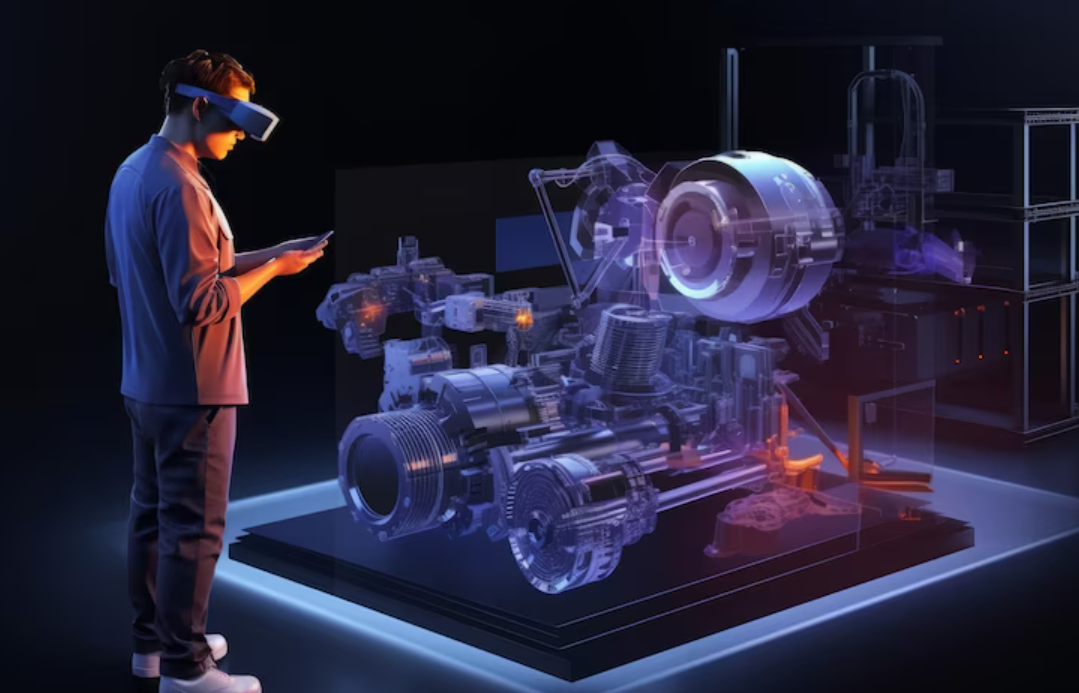Revolutionizing R&D: How AI Is Transforming Physics Simulations Across Industries

Artificial intelligence is fundamentally reshaping the landscape of research and development. Among the most profound changes is how AI is revolutionizing physics simulations, once the domain of painstaking computational modeling and trial-and-error experimentation.
From aerospace engineering to biomedical research, AI’s ability to model complex systems with remarkable accuracy and speed is opening new frontiers that were previously inaccessible due to limitations in computing power and time. This transformation is not merely an incremental improvement; it’s a paradigm shift in how industries design, test, and innovate.
The Traditional Landscape of Physics Simulations
Historically, physics simulations have relied on methods like finite element analysis (FEA), finite difference methods (FDM), and Monte Carlo simulations. These approaches use well-established physical laws to create numerical models that simulate phenomena such as fluid flow, thermal behavior, or structural stress.
While highly accurate when applied correctly, these simulations are often computationally intensive. Large-scale simulations may require high-performance computing clusters and days—or even weeks—of runtime to deliver meaningful results.
In fields like aerospace, automotive engineering, and energy, traditional simulations are deeply embedded in design and testing workflows. Engineers use these models to simulate everything from air turbulence over a wing to the thermal expansion of materials under stress. Yet, even with advanced hardware and software, these simulations can become bottlenecks in the innovation pipeline.
This is where physics AI is making a significant impact. By leveraging machine learning models trained on large datasets of previous simulations or experimental results, AI can generate fast, approximate predictions that are good enough for many practical applications. These models do not replace the laws of physics but rather accelerate their application in computationally efficient ways.
How AI Enhances Physics Simulations
AI’s most transformative contribution lies in its ability to develop data-driven models that approximate physical behavior. These models are trained on large sets of data—either from past simulations or real-world measurements—and can rapidly predict outcomes without solving complex equations each time. This significantly reduces the computational load and time required for each simulation.
Surrogate models, a common application of AI in simulations, serve as lightweight approximations of detailed physical simulations. For instance, rather than running a full fluid dynamics simulation to test how air flows around a new car design, engineers can use a neural network trained to recognize flow patterns based on shape. These models can return results in seconds rather than hours.
Hybrid approaches also offer powerful results by blending physics-based methods with AI. This ensures that AI models respect physical constraints while benefiting from the flexibility and speed of machine learning. For example, physics-informed neural networks (PINNs) are designed to embed known physical laws directly into the training process, ensuring more reliable and interpretable outputs.
Key Technologies Powering the Transformation
A host of advanced technologies make the AI transformation in physics simulations possible. Deep learning algorithms, particularly convolutional and recurrent neural networks, are capable of modeling time-dependent and spatial phenomena with remarkable accuracy. These models excel at recognizing patterns in data, making them ideal for complex physical systems where equations are nonlinear and interdependent.
Reinforcement learning is another key driver. It allows AI agents to learn how to optimize simulation parameters or explore design spaces autonomously. This is particularly useful in scenarios like aerodynamic optimization or control system development, where multiple objectives must be balanced.
Generative AI, using models like GANs (Generative Adversarial Networks) or diffusion models, can create synthetic datasets that fill in gaps where real data is limited or expensive to obtain. These tools help expand the training data available for simulation models, improving accuracy and generalizability.
Industry Applications and Impact
In aerospace and defense, AI-enhanced computational fluid dynamics (CFD) tools are enabling faster evaluation of new aircraft designs. Engineers can explore hundreds of design variations in the time it previously took to simulate one. Structural simulations that assess aircraft integrity under different stress conditions are now being augmented with AI to allow quicker iteration without sacrificing safety or performance.
The automotive industry is also seeing major gains. AI accelerates crash test simulations, allowing automakers to test more scenarios digitally before any physical prototype is built. For electric vehicles, battery simulations enhanced by AI are helping optimize energy density, thermal performance, and longevity in record time.
In healthcare and biotech, AI is transforming molecular simulations, enabling faster drug discovery by predicting protein-ligand interactions. Thanks to AI-driven models trained on diverse patient datasets, biomechanical simulations used to design implants and prosthetics can now account for a wider range of body types and usage scenarios.
In Summary
Artificial intelligence is ushering in a new era for physics simulations and, by extension, for research and development at large. It’s not just making simulations faster—it’s changing how we innovate, test, and design. Across industries, AI is turning what was once a costly and time-consuming process into a dynamic, agile tool for exploration and problem-solving.
By integrating the best of machine learning with the rigor of physical laws, businesses and researchers are achieving breakthroughs that were previously thought to be years—or decades—away. As AI continues to evolve, the simulations that drive our technologies will become more powerful, more accessible, and more transformative than ever before.
Recent Posts
Recent Comments

Top Services Offered by an Artificial Intelligence Automation Agency

How Can AI-Powered Inbound Call Centers Improve Customer Satisfaction?

How AI and Automation Are Changing Commercial Animation Studios

The Future of Front Desk Management: Why AI Receptionists Are Leading the Way

Why Electricians Recommend Upgrading Old Switches and Lights Today

Variance in Finance: How CFOs Can Leverage Analytics Tools for Informed Decision‑Making

Mastering Event Planning: Finding the Perfect Function Space
